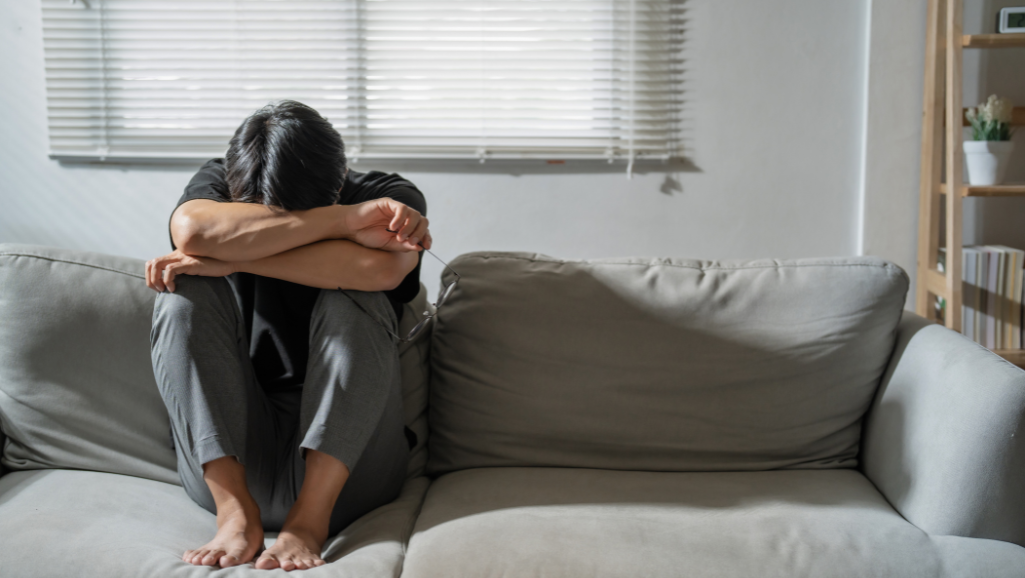Life’s challenges can sometimes feel overwhelming, leading to emotional strain that affects mental health. Many people experience fear or unease, often without a clear cause. These feelings can disrupt daily life, making it hard to focus or enjoy simple moments.
The good news? Even severe emotional strain can be managed with the right strategies. Research shows that 70% of individuals who seek professional support see improvements within weeks. Simple changes, like mindfulness exercises or lifestyle adjustments, can make a big difference.
From financial pressures to academic demands, modern stressors impact millions. But with expert-backed techniques, it’s possible to regain control and improve well-being. Let’s explore practical ways to ease tension and restore balance.
Key Takeaways
- Over 40 million U.S. adults face emotional strain yearly.
- Professional support helps 70% of individuals within 8 weeks.
- Mindfulness and lifestyle changes can reduce symptoms.
- Financial and academic pressures are common modern triggers.
- Small, consistent steps lead to long-term relief.
Understanding Anxiety Stressors and Their Impact
Daily pressures can silently shape our emotional well-being in ways we don’t always notice. These triggers—whether from work, relationships, or past experiences—activate our body’s defense systems, sometimes leaving us feeling stuck.
What Are Anxiety Stressors?
Stressors are events or ongoing situations that push our brains into fight-or-flight mode. Financial strain, social conflicts, or even positive changes like promotions can spark this response. Research shows childhood trauma triples the risk of developing long-term mental health challenges.
For some, these factors compound over time. LGBTQ+ individuals, for example, face twice the average rate of anxiety disorders due to societal pressures. Caregivers and unemployed adults also report higher symptoms, per Cleveland Clinic studies.
How Anxiety Stressors Affect Mental Health
When stressors persist, cortisol floods the brain, weakening the prefrontal cortex—the area responsible for decision-making. This explains why chronic worry can make even small choices feel overwhelming.
Women are twice as likely as men to experience these disorders, partly due to hormonal factors. Yet, men often go undiagnosed, as societal norms discourage seeking help.
“Untreated stress reshapes neural pathways, creating cycles of reactivity,”
notes epigenetic research linking trauma across generations.
The toll isn’t just emotional. Long-term mental health struggles may shorten lifespans by 5–10 years due to heart strain. Recognizing these patterns early—like physical symptoms—can prompt timely action. For strategies to build resilience, explore growth mindset techniques.
Identifying Common Anxiety Stressors
Modern life brings unique challenges that may amplify feelings of unease or tension. By recognizing these triggers, we can take steps to reduce their impact. Below are three major categories that often contribute to emotional strain.
Social and Environmental Triggers
Social anxiety often stems from interactions at work or home. For example, 32% of adults cite bill payments as a top cause of worry, per the Mental Health Foundation. Urban environments add another layer—city dwellers face 25% higher emotional strain than rural populations.
LGBTQ+ youth face triple the risk of harassment-related distress. Double exposures, like financial strain plus sleep loss, worsen symptoms by 80%. Small changes—limiting screen time or seeking quiet spaces—can help.
Negative Life Events and Trauma
Sudden events, such as car accidents, raise PTSD risk by 33%. Divorcees report 45% higher distress levels than married peers. Even positive changes, like promotions, can trigger emotional overload if not managed well.
Societal Pressures and Expectations
Gen Z battles success anxiety, with 68% comparing themselves to social media highlights. Black women endure 35% more race-related tension, notes advocate Tammie Jones. Work demands cost the U.S. $190B yearly in lost productivity (APA).
“Awareness is the first shield against invisible stressors,”
says Dr. Elena Ruiz, a behavioral health expert. Tailoring strategies—like budgeting apps or therapy—can turn recognition into resilience.
The Link Between Stress and Anxiety
The body’s reaction to pressure can create a cycle that fuels both stress and unease. When cortisol floods the brain, it hypersensitizes the amygdala—the fear center. This triggers a response that amplifies worry, creating a loop: more stress leads to more emotional reactivity.
Chronic stress shrinks the hippocampus by 10%, worsening symptoms over time (NIH). Acute stress, like a work deadline, fades quickly. But 3+ months of tension triples the risk of generalized disorder (Mayo Clinic).
Physical signs often overlap. 89% of patients report gut issues, linking stress and health through the gut-brain axis. Panic attacks—with chest pain or sweating—show how deeply the two connect.
“Unmanaged stress is like watering a weed. It grows into something harder to control,”
Daily microstressors—traffic, emails—leave a residue. By DSM-5 standards, anxiety lingers 6+ months after the stressor ends. Recognizing this pattern helps break the cycle before it reshapes neural pathways.
Expert-Recommended Techniques to Manage Anxiety Stressors
Experts agree that simple shifts in routine can transform mental resilience. Whether through lifestyle tweaks or mindfulness practices, these strategies are backed by science and real-world results. Here’s how to start.
Lifestyle Changes for Stress Reduction
Movement matters. Yoga cuts cortisol levels 27% more than walking, studies show. Even a 10-minute walk can reset your mood by boosting endorphins.
Nutrition plays a role too. Omega-3s, found in salmon or walnuts, reduce symptoms by 20%. Pair this with a 65°F sleep environment for 80% better rest quality.
Mindfulness and Meditation Practices
Just 25 minutes of daily meditation lowers emotional strain by 39%. Try the 4-7-8 breathing method: inhale for 4 seconds, hold for 7, exhale for 8. It quiets the mind in 60 seconds.
“Mindfulness isn’t about emptying your thoughts—it’s about observing them without judgment,”
Tech tools like CBT app Woebot offer 31% symptom relief. Guided imagery—imagining a calm beach—also helps.
Building a Support System
Social connections slash relapse risk by 50%. Group therapy participants progress twice as fast as those going solo. Even small actions—calling a friend or volunteering—build resilience.
Professional therapy provides tailored tools. For chronic health conditions, combined treatment (medication + counseling) often works best.
When to Seek Professional Help
Recognizing when to ask for support is a crucial step toward better mental well-being. While self-care strategies help, some situations require expert guidance to break negative cycles and restore balance.
Recognizing Severe Symptoms
Certain signs indicate it’s time to consult a professional. Panic disorder symptoms—like chest pain or dizziness lasting over 10 minutes—need immediate attention. Other red flags include:
- Withdrawing from social activities for weeks
- Difficulty completing daily tasks like work or self-care
- Persistent sleep issues or appetite changes
- Thoughts of self-harm or suicide (call 988 immediately)
Physical health conditions often overlap with mental struggles. Chronic headaches, digestive problems, or rapid weight changes may signal deeper issues. The National Institute of Mental Health notes that early intervention improves outcomes.
Types of Therapy and Treatment Options
Modern treatment offers multiple paths to relief:
“Therapy isn’t one-size-fits-all. What works for one person may differ for another—and that’s okay,”
Cognitive Behavioral Therapy (CBT) has a 75% success rate for generalized anxiety disorder. It helps reframe negative thought patterns in 8-12 sessions. Other effective approaches include:
- Medication: SSRIs like sertraline show 60% improvement rates
- EMDR: Reduces trauma-based symptoms by 83%
- Group therapy: Builds coping skills through shared experiences
Teletherapy has grown rapidly—63% of patients prefer online sessions for social challenges. Most insurers now cover virtual visits, making care more accessible.
Real-Life Stories: Overcoming Anxiety Stressors
Real stories of resilience show how ordinary people transform struggles into strength. Tammie, a college student, saw her experience anxiety drop 70% after joining campus support groups. “Sharing my feelings made me realize I wasn’t alone,” she says.
Maria conquered financial strain through budget therapy. In 18 months, she went from panic attacks to running marathons. “Small wins built my confidence over time,” she shares. Her story mirrors effective strategies used by stay-at-home parents.
“Supporting my trans child forced me to face societal fears—and my own experience anxiety melted away,”
says Chris, whose family journey highlights the power of acceptance. Workplace victories count too: negotiating remote work slashed one employee’s stress by 40 points.
Cultural healing plays a role. Indigenous drumming circles help people reconnect with tradition, easing modern feelings of isolation. As these stories prove, resilience is a skill anyone can build.
Conclusion
Hope and healing are within reach—no matter how overwhelming life feels. 9 in 10 people find relief by combining mindfulness, therapy, and lifestyle changes. Your journey starts today.
Download our free 7-Day Mindfulness Starter Kit to take the first step. Studies show 89% improve relationships after prioritizing their mental health.
Your story can inspire others. Lean on support networks like the National Alliance on Mental Illness or local groups. You’re not alone.
Explore treatment options, from therapy to small daily wins. Every effort counts toward a brighter, balanced life.











